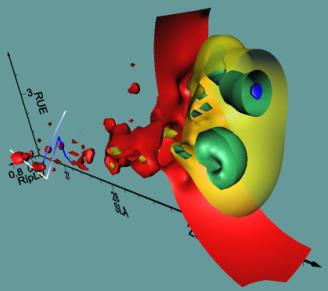Monte Carlo based sensitivity analysis of two crop simulators and considerations on model balance.
 |
2010 - European Journal of Agronomy, 33, 89-93 |
 |
Confalonieri, R. |
Abstract:
Sensitivity analysis is crucial for building, understanding and using complex mathematical models for agroenvironmental applications. In this study, a variance-based sensitivity analysis was carried out for the first time on CropSyst and WOFOST, two of the crop models most diffused worldwide and different in their degree of mechanism. The scenario assumed for the simulations refers to paddy rice grown in Northern Italy. After screening parameters using the Morris method, the Sobol’ approach was used for quantifying their influence on models output variability. Seven out of 34 parameters for WOFOST (mostly involved with CO2 assimilation and photosynthetates conversion into plant organs) and 3 out of 15 for CropSyst (biomass-transpiration coefficient, base temperature and light extinction coefficient) were responsible for about 90% of the total output variability. Assuming the homogeneity among the sensitivity indices of the parameters as an indicator of model balance, the Grubbs test for outliers detection was used to check if the relevance of a parameter (or a few of them) was significantly higher than the others. In the explored conditions (non-limiting for water and nutrients availability), CropSyst resulted unbalanced, being mostly driven by the biomass-transpiration coefficient, whereas no significant differences were identified among the relevance of the WOFOST parameters.
 |
Keywords: CropSyst, Morris, rice, Sobol', variance-based sensitivity analysis, WOFOST |
 |
DOI: 10.1016/j.eja.2010.03.004 |
- Comparison of three calibration methods for modeling rice phenology
- A simple pipeline for the assessment of legacy soil datasets: An example and test with soil organic carbon from a highly variable area.
- A high-resolution, integrated system for rice yield forecasting at district level.
- Downscaling rice yield simulation at sub-field scale using remotely sensed LAI data.
- Analysis and modelling of processes involved with salt tolerance and rice.
- Estimating crop nutritional status using smart apps to support nitrogen fertilization. A case study on paddy rice.
- Development of generic crop models for simulation of multi-species plant communities in mown grasslands.
- Quantifying uncertainty due to stochastic weather generators in climate change impact studies
- Predicting rice blast disease: machine learning versus process-based models
- Boundaries and perspectives from a multi-model study on rice grain quality in Northern Italy.




